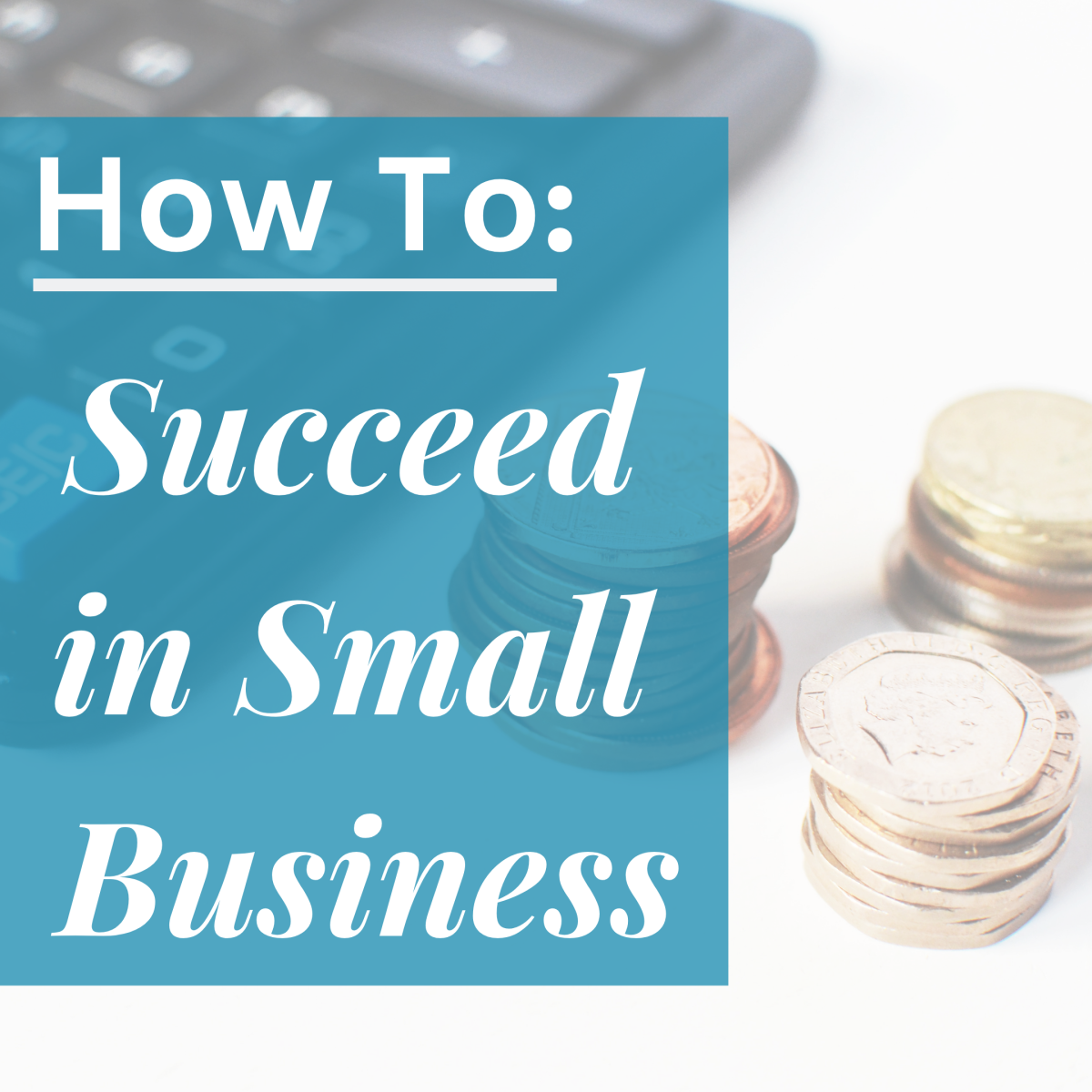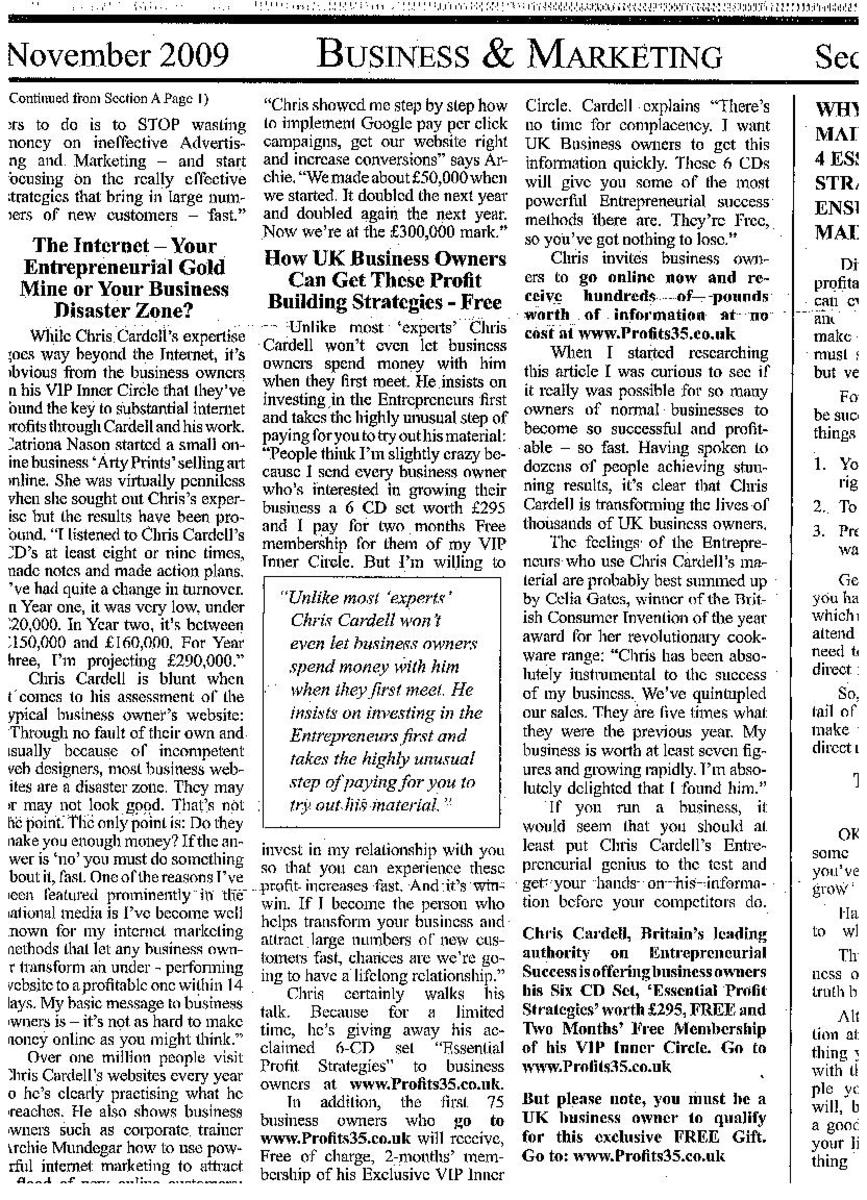Bare Basics: Using Market Segmentation to Sell Products

A Marketing 101 Class to Help New Entrepreneurs and Small Business Owners
What is market segmentation? Simply, It is a way to divide or segment a market of potential buyers using certain characteristic of a population. Satisfying customer needs in a way that allows marketers to profit is the ultimate goal of everything associated with marketing. If you are a new entrepreneur or small owner planning to market either your business or a product/service, the more you learn about your customers/potential customers, the better you will be able to serve their needs/wants, thereby increasing your profit potential.
In fact, according to one of the world's most renowned management experts, Peter Drucker, it is the job of marketing to match consumers and products so well that there’s no need for selling. With Mr. Drucker's opinion in mind let's take a look at a good place to begin, first to reach, and thereafter, to serve customers well.
As a marketing consultant and former college professor of marketing, I know how important it is for marketers to understand—for the sake of matching consumers and products, how to discover and use important consumer characteristics. I also know, as someone planning to become a new business owner, how hard it can be to find the time you need to learn anything new. For this reason, I'm offering in this article information associated with understanding market segmentation, something that's closely related to consumer buying behavior, as well as to purchasing patterns and market potential. Market segmentation is a tool that companies of any size can use for this purpose. It is a way for marketers, including entrepreneurs and small business owners, to pinpoint their best potential prospects in order to develop effective ways to get, keep, and grow customers.

The Buyer "Universe"
To understand market segmentation, it is helpful to think of all potential buyers as a “universe.” Next, imagine that it is possible to divide (or segment) this universe in a number of different ways, using a number of different characteristics. The two primary ways marketers divide the universe is to segment people based on either demographic or psychographic variables.
Demographics—This terms refers to dividing and then grouping people based on population demographic/statistical characteristics. To segment your universe by demographics, you will need to use criteria such as age, sex, income, education, race, marital status, size of household, geographic location, zip code, size of city or town, career/profession, and other types of statistical data or facts about populations within your universe.
A store owner, for example, might decide to divide up a universe of potential customers according to the economic status of its present and/or potential customers. The owner could plan to promote his or her store/products mainly to people with an annual income between $45,000 and $90,000 dollars. Or, the owner could choose to divide the universe up based on the geographic location where customers and potential customers live. Using geographic location to divide the market, the store could seek to sell most of its products mainly to people living within a five-mile radius of the store location, or to people living within five specific zip codes in the general vicinity of the store. If there were products that were geared toward larger families, such as households with three or more children, the store's marketing universe could be divided up or segmented based on demographic characteristic of size of household.
Many small businesses with limited resources use simple techniques to identify and communicate with their most likely customers. Large companies with more financial resources often use many more and different research methods that allow them to collect a lot more information about their potential customers.

Psychographics—This term refers to dividing and then grouping people using studies of population variables related to personality, values, attitudes, interests, and lifestyles. While demographics can tell marketers "who" makes up their universe, psychographics goes a step further to provide information about "why" consumers buy what they purchase. Psychographic variables are linked to consumers’ decision-making behavior, as well as their purchase choices. For example, personality characteristics can describe customers as either risk-avoiders or risk-takers, or it can tell marketers if members of a universe are impulse buyers or rational buyers. Information such as this can help marketers know not only how to create advertising and marketing communications messages to reach consumers effectively, it can also help pinpoint such things as where to place items in a store.
Following is a description of other psychographic considerations related to consumer behavior and decision-making:
-
Lifestyle. This refers to things such as consumers’ hobbies, recreational pursuits, entertainment likes/dislikes, tendency to take vacations, and many other non-work time pursuits of different groups of potential buyers.
-
Beliefs and value systems includes information about things such as religious beliefs and affiliations, as well as political, nationalistic, and cultural beliefs and values.
-
Life stage refers to the chronological benchmarking of people's lives at different ages. A population universe could be divided into sections or segments based on any number of life-stage factors, such as pre-teens, teenagers, young adult, middle-age, and empty-nesters, etc. Or, a universe could be divided based on the historical generation of a population segment, such as “Baby Boomers” or “Gen X.”
Spending Big vs. Small
As I stated earlier, many large companies often segment their markets by conducting extensive (and costly) market research projects. This research can be complex and often involves customer and product data-gathering.
Small firms often segment markets using information on customers or prospective customers, including such things as: geography (where customers live), store location/product distribution area, and other tangible factors in addition to demographics and lifestyle considerations. Small companies are free to engage in the same sophisticated research techniques employed by big business, if they also have an unlimited budget.
Often, as an entrepreneur or small business owner, the best way to learn about your market segment, in order to become better able to target a particular niche, is to simply talk to the people you serve, the people you'd like to serve, the people who serve you, and/or the people you compete with. When compared to costly research projects, talk is definitely cheap. It doesn't cost much, yet it can offer great returns on any investment of time or money. Asking the right questions and then listening closely to the responses you get is critical to making “talk” work to benefit your business or your company.

The Eighty/Twenty Rule
It is accepted in marketing that, in general, 20 percent of buyers for just about any product will consume 80 percent of the product volume, in any industry or product category. Therefore, if you can identify your key 20 percent of customers/potential customers, and then find others like them, it is possible that you could sell much more product with much less effort. Sometimes, this practice is referred to as niche marketing (to "heavy users").
Niche Marketing
Picking the right segment of the market is important if you are to achieve sales volume sufficient for profitability. Picking the right market segment means picking a market segment that is: Measurable in quantitative terms, large enough to generate planned or needed sales volume, has access to your company's distribution place/methods, and is reachable based on your planned marketing spending.
The heaviest users, those who consumer most of your products, can be thought of as a market niche that it pays to dominate as a business owner or entrepreneur. Niche marketing involves targeting, communicating with, selling to, and obtaining feedback from the heaviest users of your business’s products or services. Still it is not enough to focus solely on the niche. It is also important to examine other factors that could affect the success of your company in the marketplace, including:
- The strength of competitors who may attract niche buyers away from your products.
- Similarity of competitive products in the buyers’ minds.
- Rate that new product are introduced into the market by competitors.
- How easy it is for competitors to enter your market (ease of entry).
A primary motive behind niche marketing and market segmentation is to satisfy and keep those customers who really love your products or services. As time goes by, just about every marketer finds that consumers become increasingly more sophisticated and more demanding in terms of wants, needs, and expectations. And, since product choices nearly always continue to expand with consumer needs, prosperity, and world market competition, marketers must stay in close contact with customers. They must always be ready to either know, or to anticipate, the wants, needs, and desires of the market.

Market Segmentation and Business Sustainability
Once the unspoken domain of small businesses, now large companies have also learned to love, and to rely on, niche marketing. They have been using niche strategies successfully to refine and target product offerings to different market segments. Although the example I’m using below is often used to describe how niche marketing is used most effectively, it is used a lot for a good reason. It is a great example that many people can understand and identify with.
The often-used (by marketing professors everywhere) example involves the world’s leading supplier of athletic shoes and apparel, a manufacturer of “must-have” sneakers, Nike. Once, after its sales had reached a plateau, the multi-billion dollar company re-staged its offerings while pursuing a successful market segmentation strategy. They designed and marketed athletic shoes for different sports, sometimes segmenting further by offering specialized models within each sport (e.g., “Air Jordan” basketball shoes, and additional basketball shoe offerings called “Force,” were represented by Charles Barkley and David Robinson. Another, called “Flight,” was represented by Scottie Pippin). In 2008, the company introduced the “Air Jordan XX3,” a high-performance basketball shoe designed with the environment in mind.

Companies, large and small, are built and successfully sustained by identifying and estimating the size of their target market early on. This is especially important for entrepreneurs. Anyone considering starting a new business venture needs to find out, before launching it, if there is a customer base large enough to support and maintain sales for the business or the new product idea. Remember, you may think you have a great business concept or product/service idea, you might even know that a lot of people like your concept or idea. But, alone, that’s not enough reason to launch it into the marketplace.
It is important to be certain you will have enough buyers who will purchase your product often enough, so that you will have the volume of sales and profits you’ll need to remain in business. For most product/service categories, sustainability will require repeat purchases. There are few businesses that become profitable selling a product or service people need only once in a lifetime. For the exceptions, a large number of people must need the product or service at any given time, or everyone must need it eventually (e.g., funeral services), for the product or service category to be sustainable.

Final Tips for Entreprenuers and Small Business Owners
What are some low-cost and no-cost ways gather information on market segments?
- Use research secondary data sources (such as census data and print/online data from other federal, state, provincial, and local, as well as periodicals and journals, and publicly available reports from such private groups as foundations, publishers, trade associations, unions and companies)
- Use qualitative research. Conduct individual interviews with consumers, end users, trade buyers/suppliers. Qualitative research can be conducted, usually, at low or no cost.
© 2012 Sallie B Middlebrook PhD






